Hungarian company Admatis had designed infrared and phosphorescent markers to help the navigation of a satellite-chaser approaching a satellite-target. Helpful for future servicing missions, these markers will help to reduce the number of large debris items in orbit.
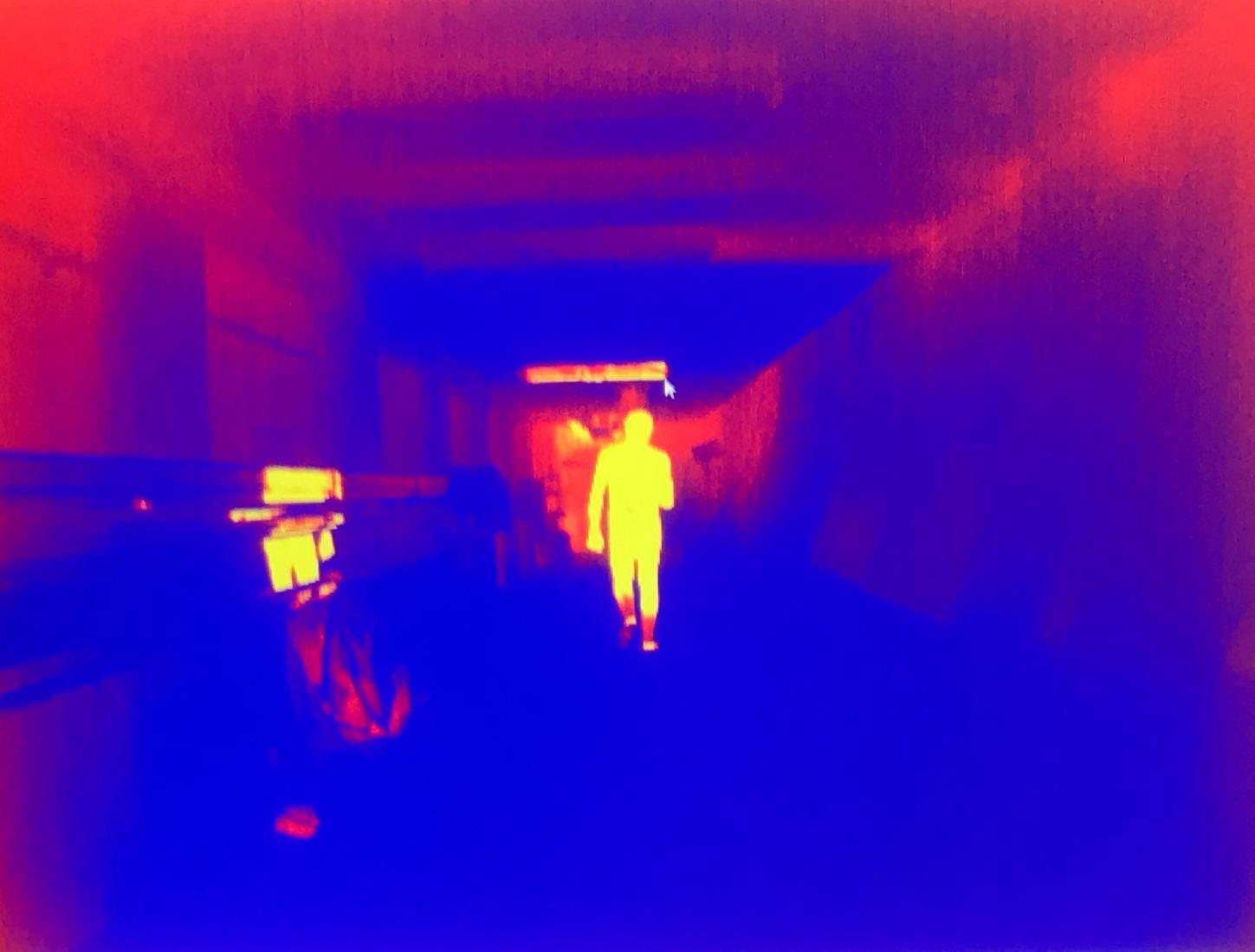
PEMSUN: Passive Emitting Material Supporting Navigation at end-of-life
The PEMSUN activity led to the design, the manufacture and the testing of infrared and phosphorescent markers. These markers will be added on future LEO platforms to help the navigation of a chaser towards its target.
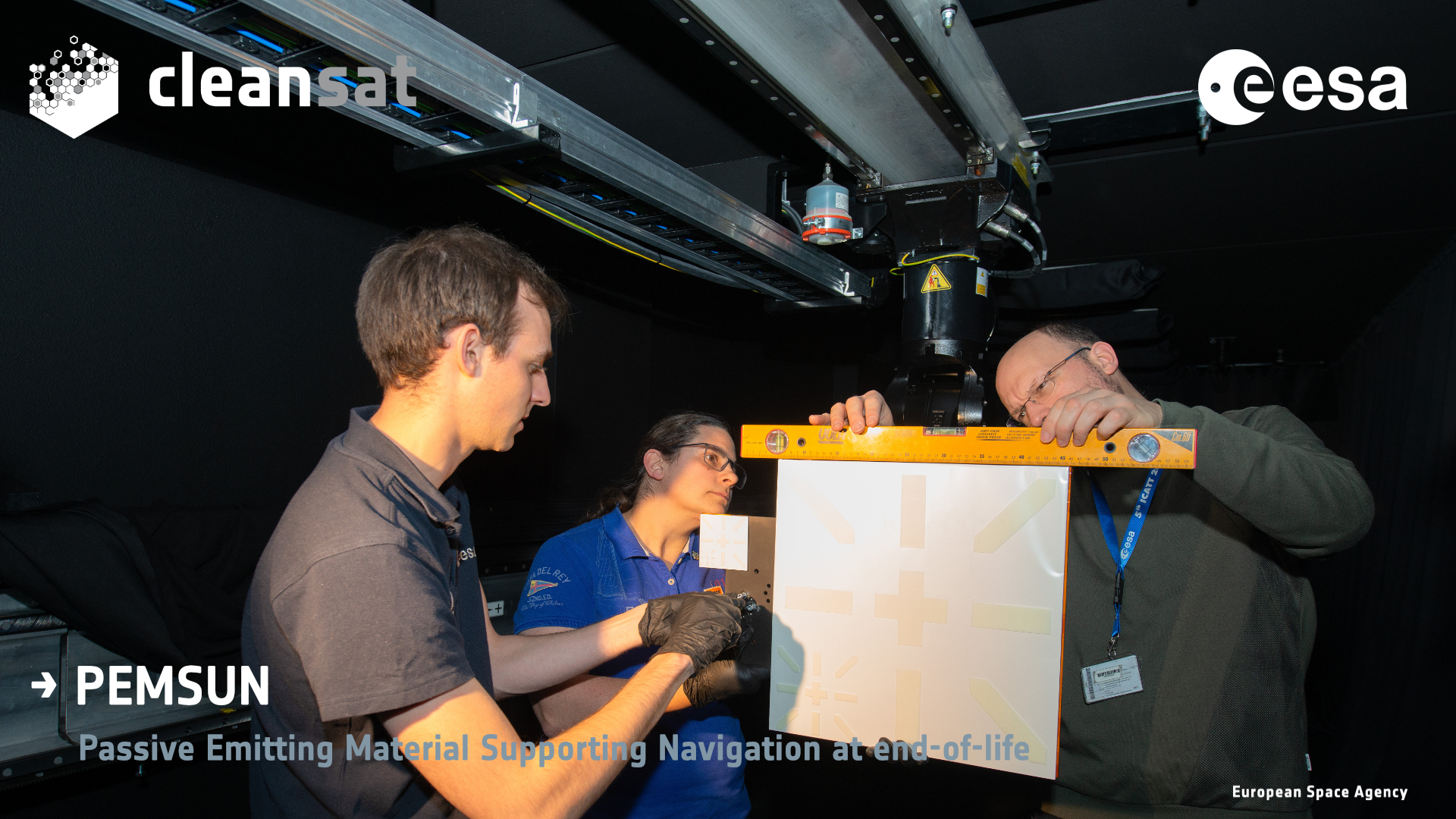
The chaser is the satellite that will offer the service in space. It will have on-board visual/infrared cameras that will point at the markers and give crucial information for navigation, such as:
– line of sight,
– range,
– velocity,
– pose relative to the target
Among the various services offered by a chaser, ESA is currently focused on debris removal. Indeed, the proliferation of debris in orbit is becoming alarming.
The markers will be added to the target during the design and manufacturing phase. The target is the satellite that will receive the service.
Removing space debris and servicing future satellites
PEMSUN has been funded by ESA in the frame of Clean Space activities aimed at helping the removal of spacecraft at the end of their life.
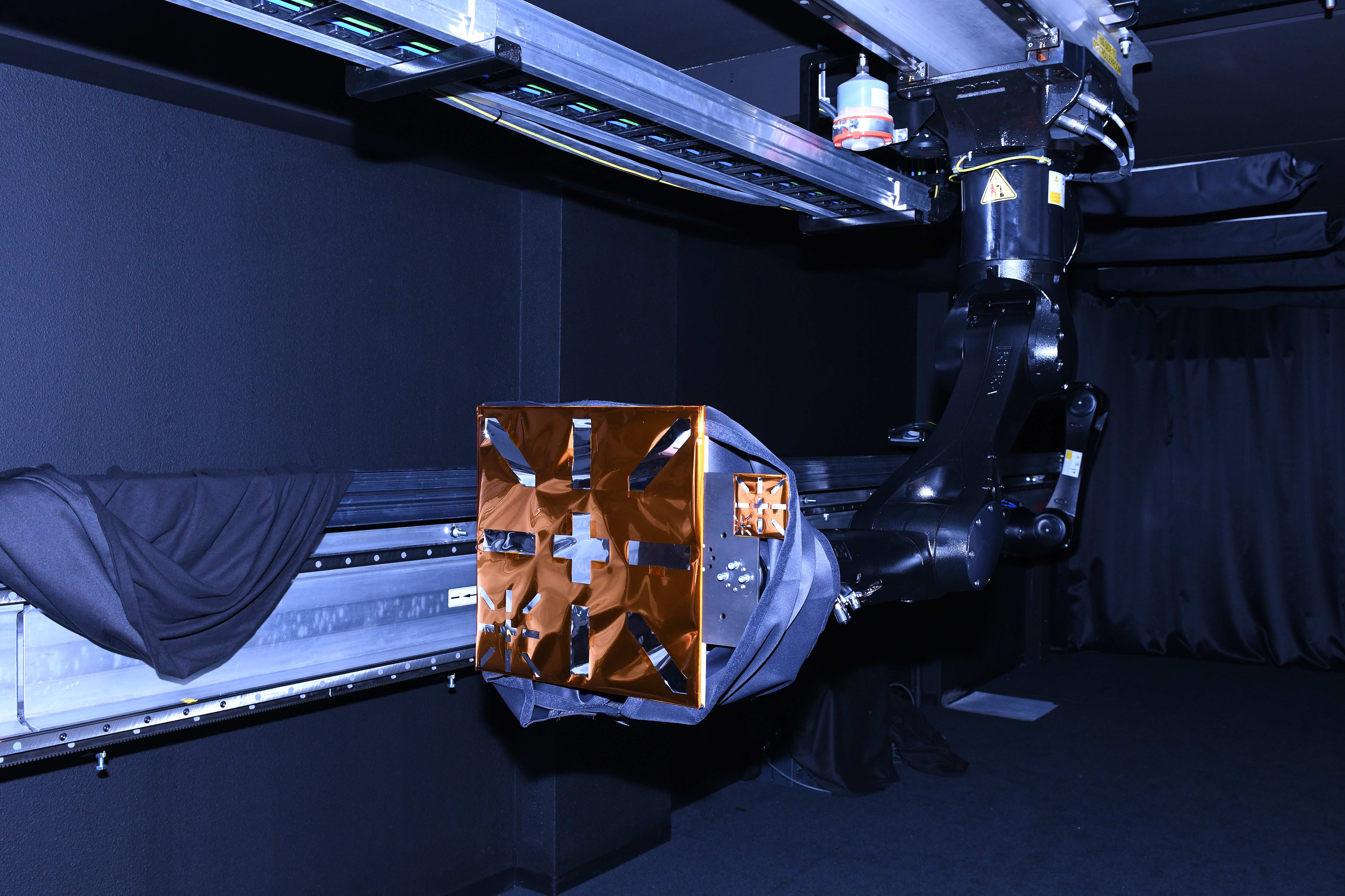
Admatis, the company awarded with the PEMSUN activity, came to ESTEC with its prototype markers at the end of March 2019.

They conducted tests in ESA’s GRALS facility to check:
– the afterglow of the phosphorescent paint during eclipse
– the contract of the pattern over time and temperature
– the line of sight achievable.
The results of the tests shall help to increase the reliability of the markers and more broadly, to understand the feasibility and potential of this technology.
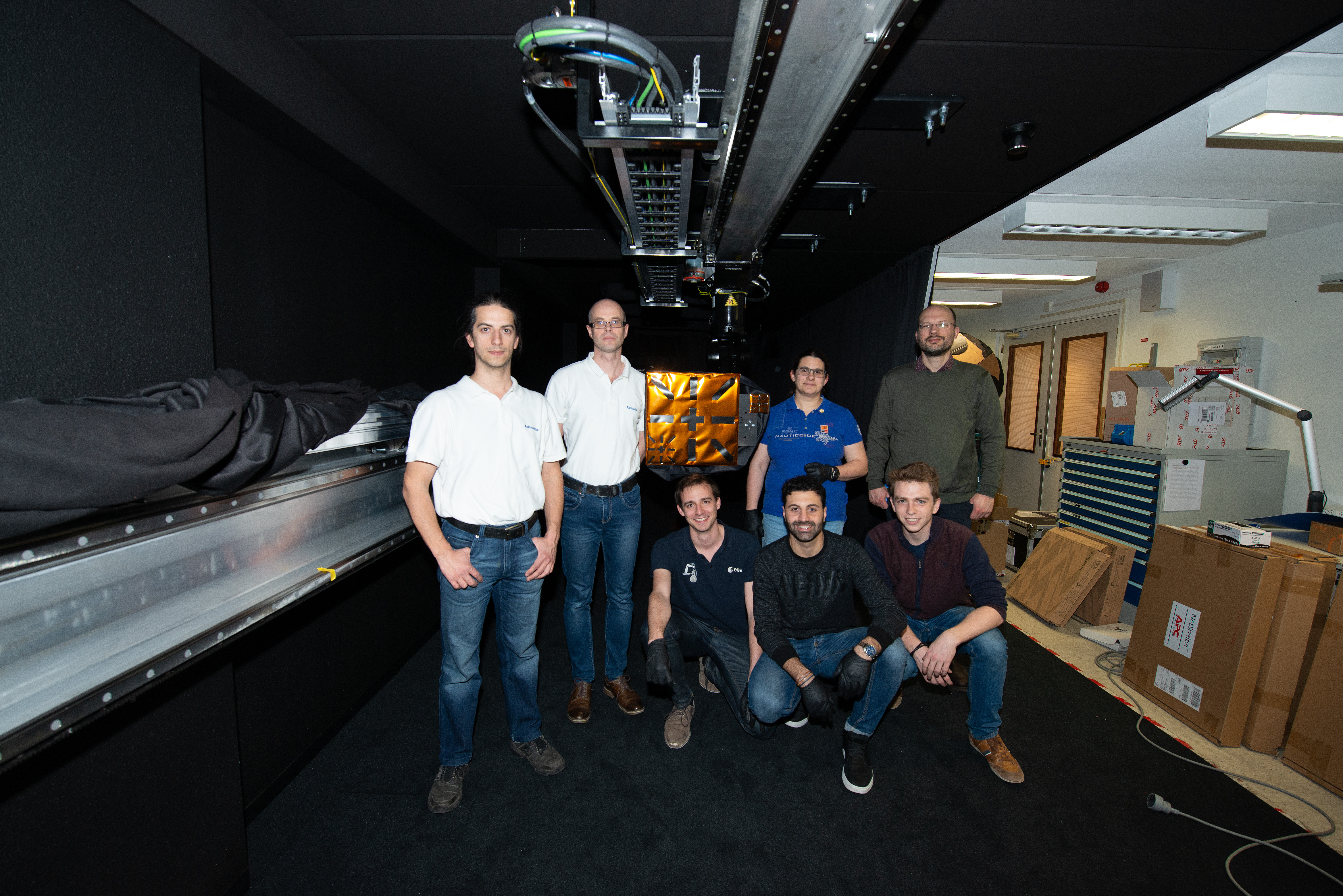
For two days, the Agency and industrial partners combined their expertise to reach the same goals:
– pave the way to future, more complex experiments,
– simulate more accurately close proximity operations
– help develop and test Design for Removal technologies.
We will keep you informed about the development of these markers. You can subscribe to the blog to ensure that you receive all latest news by clicking here.



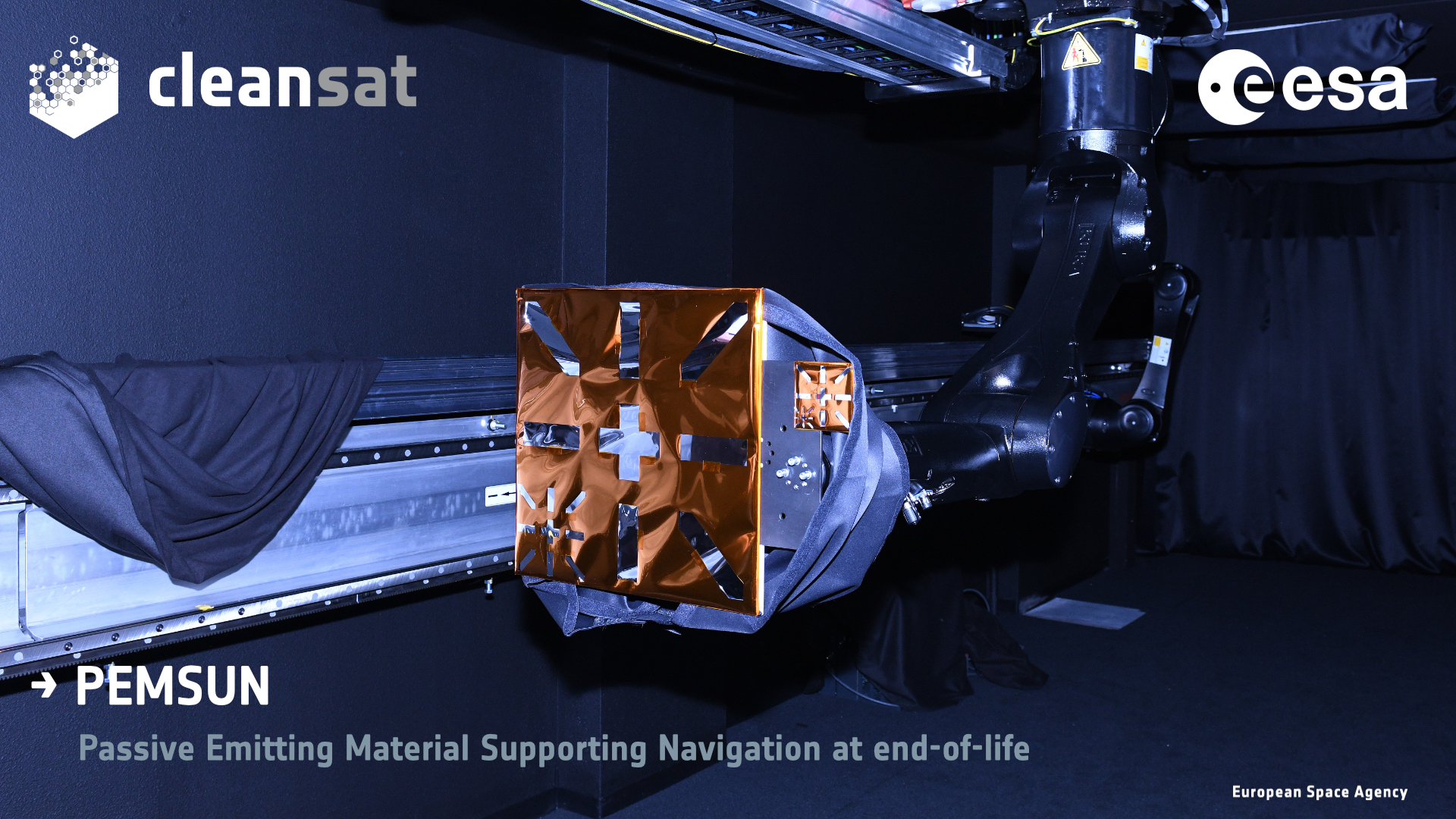


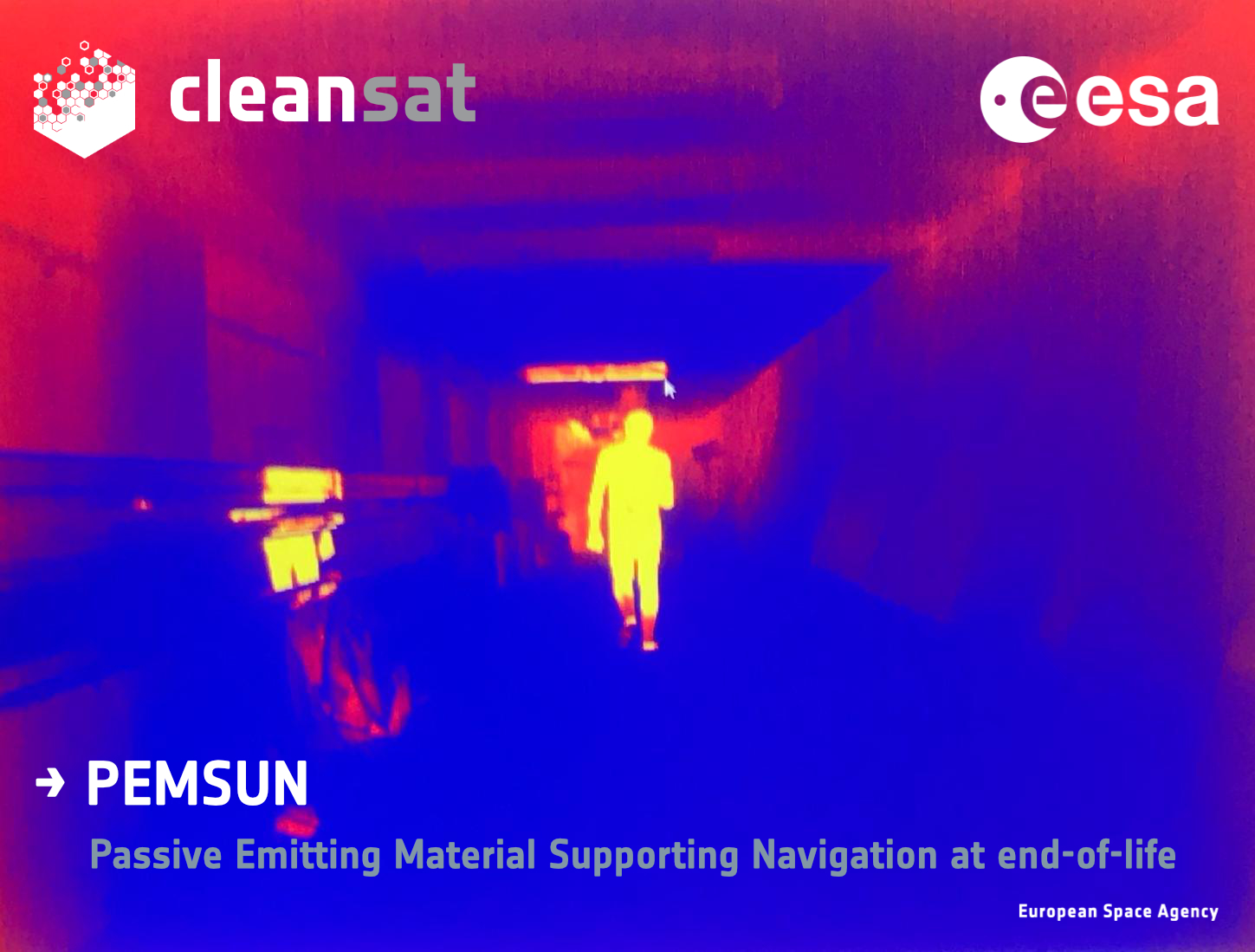



Discussion: no comments